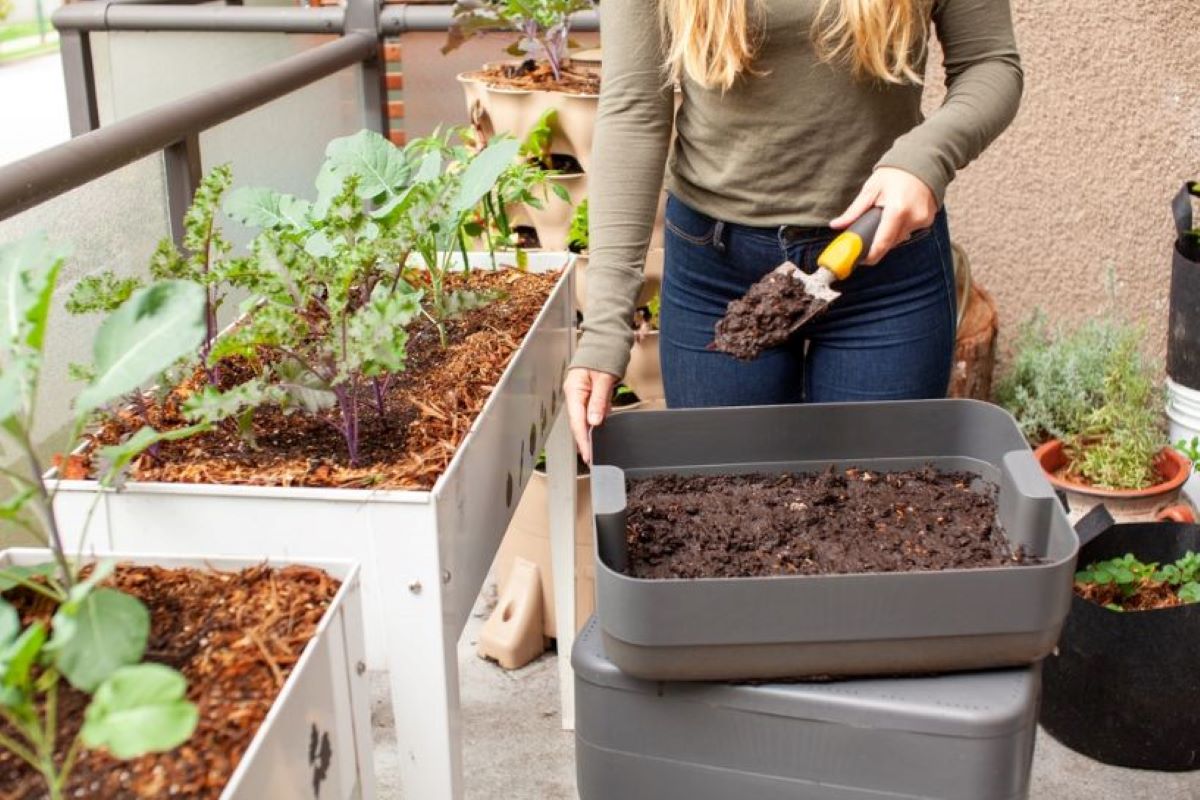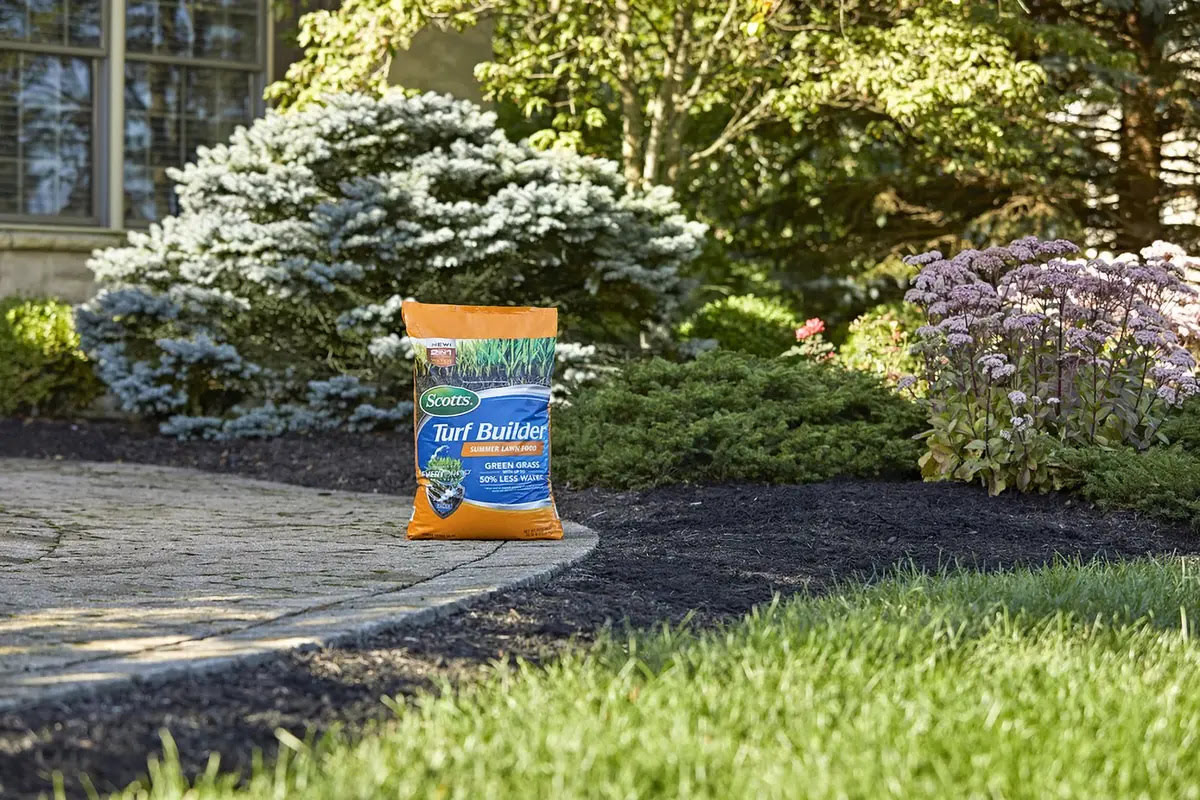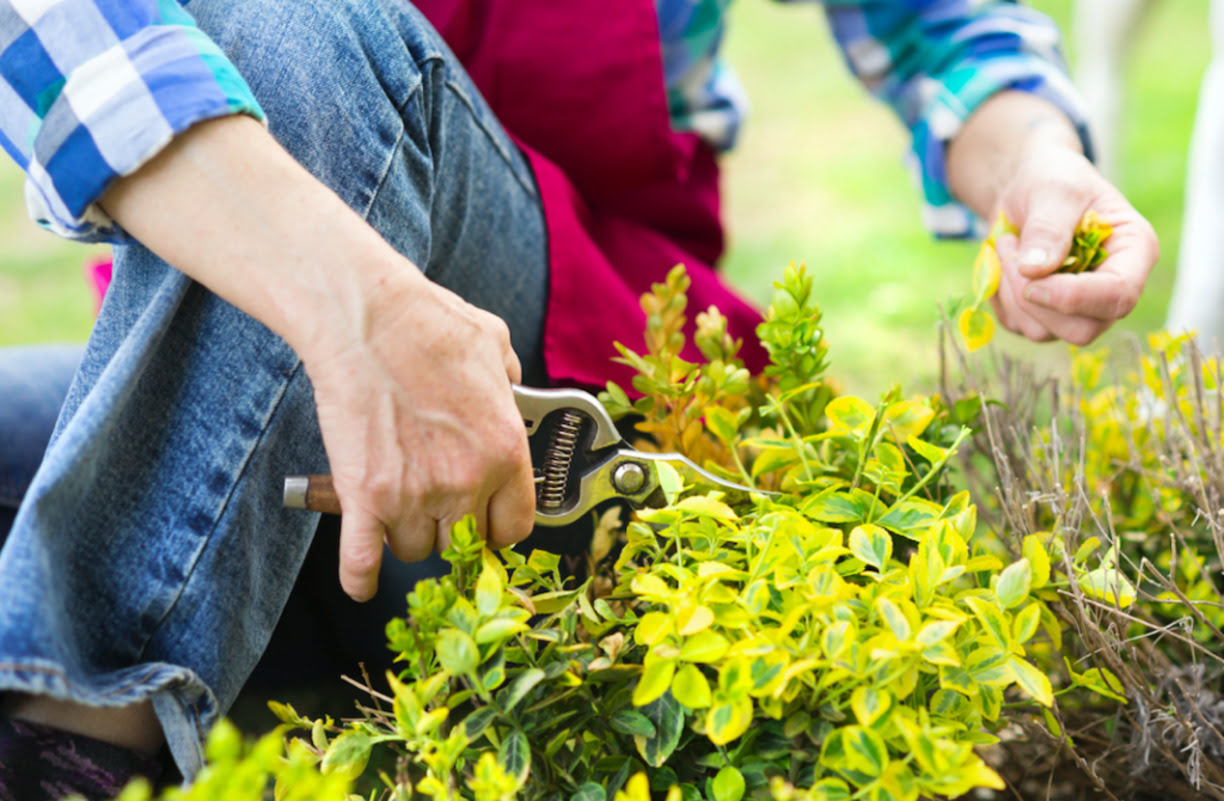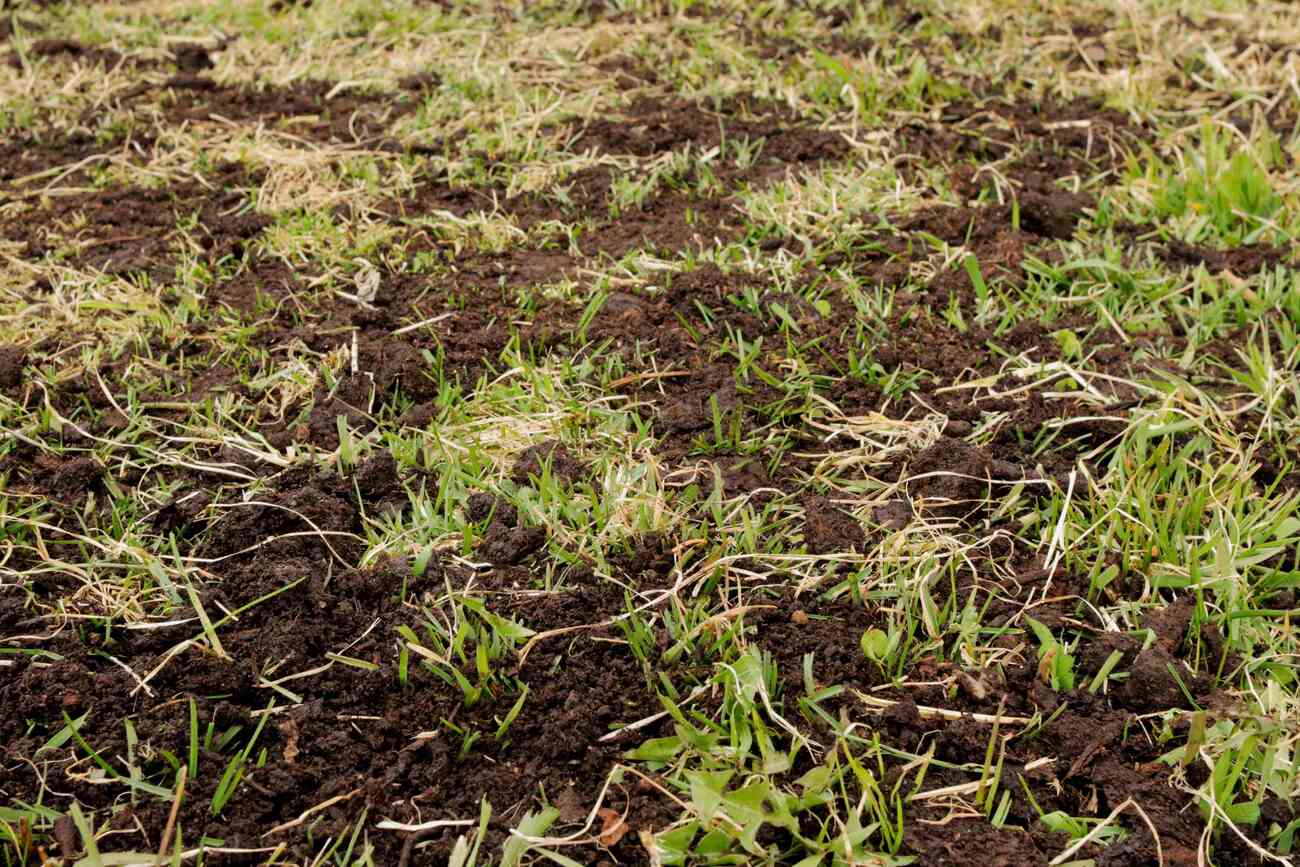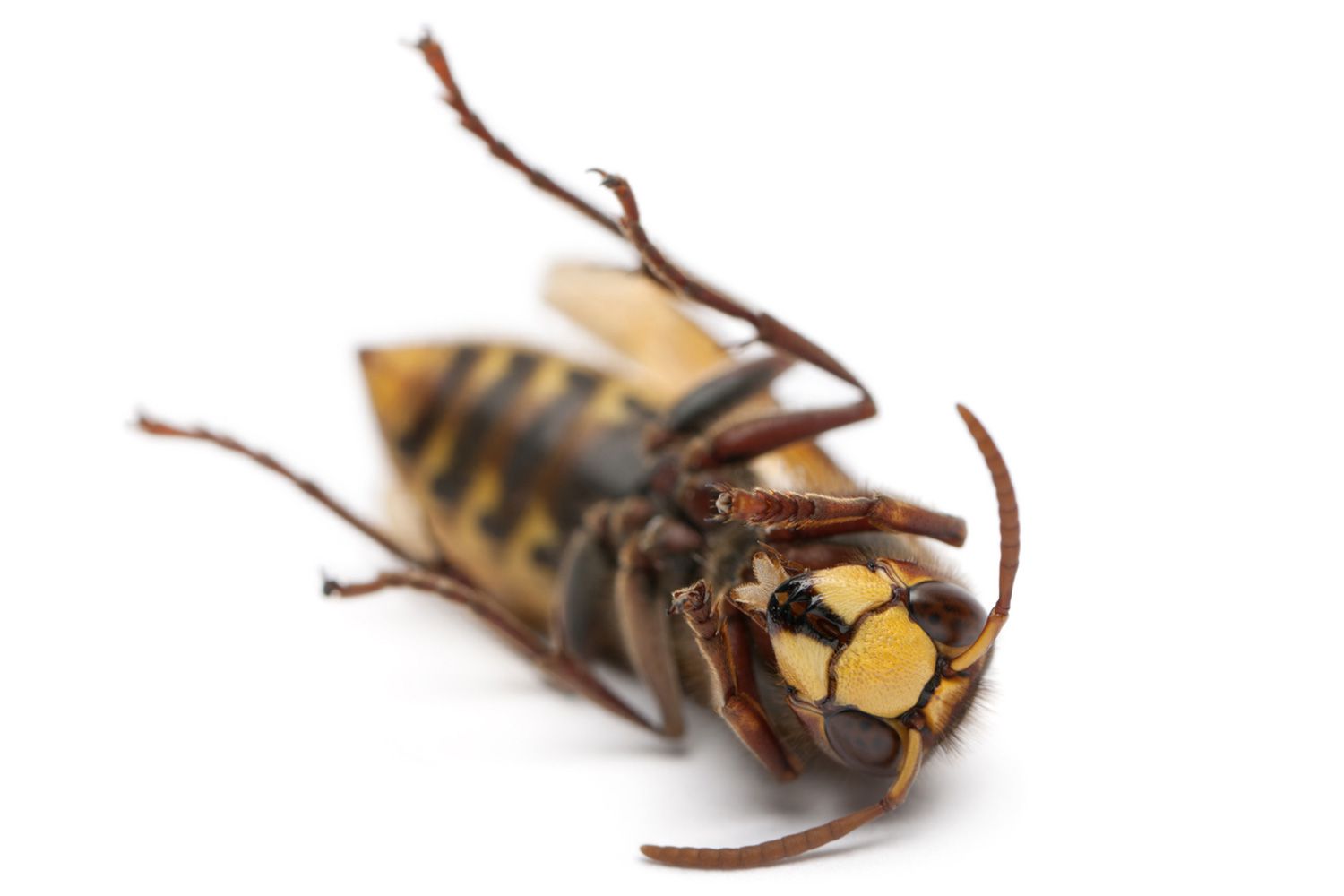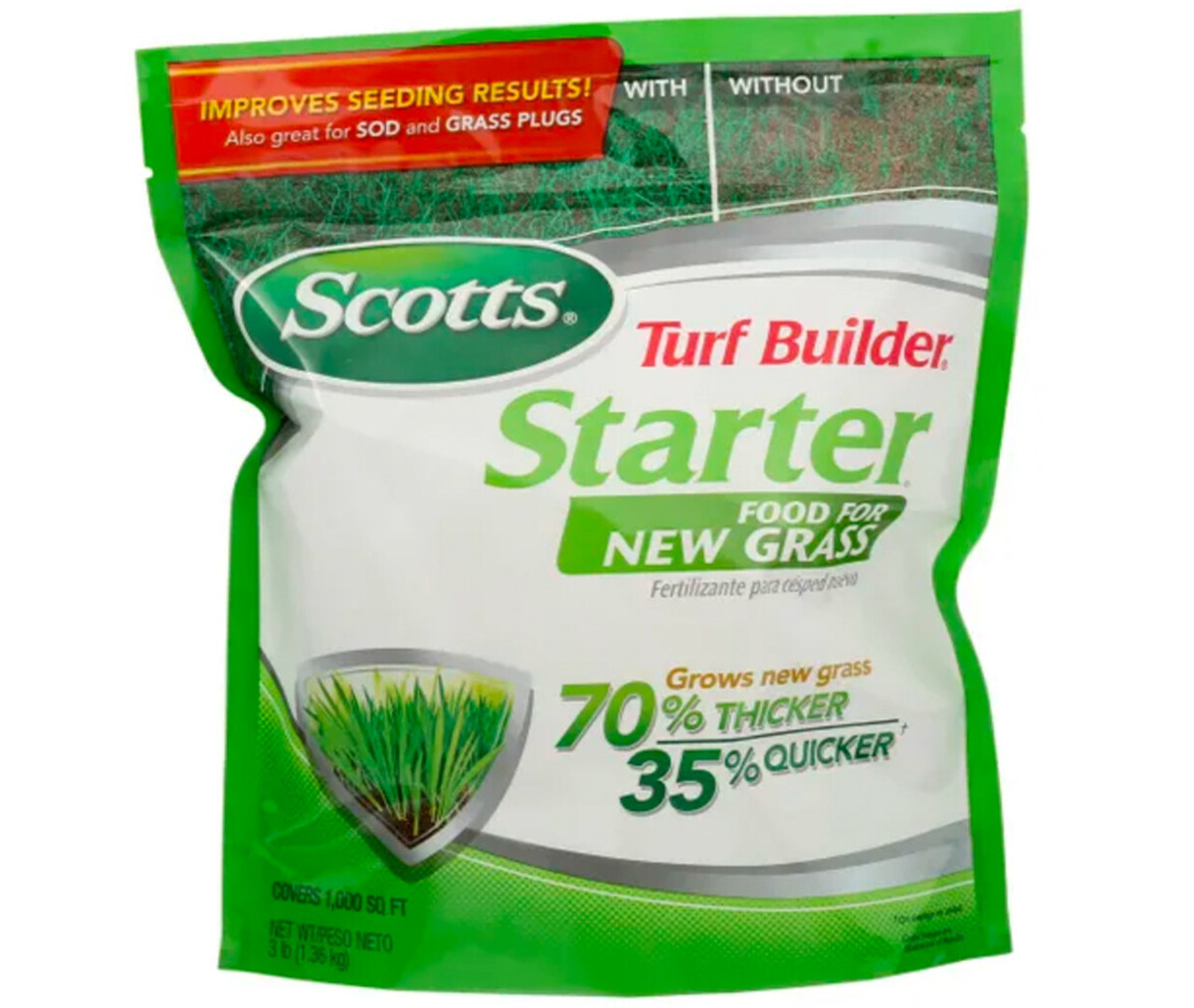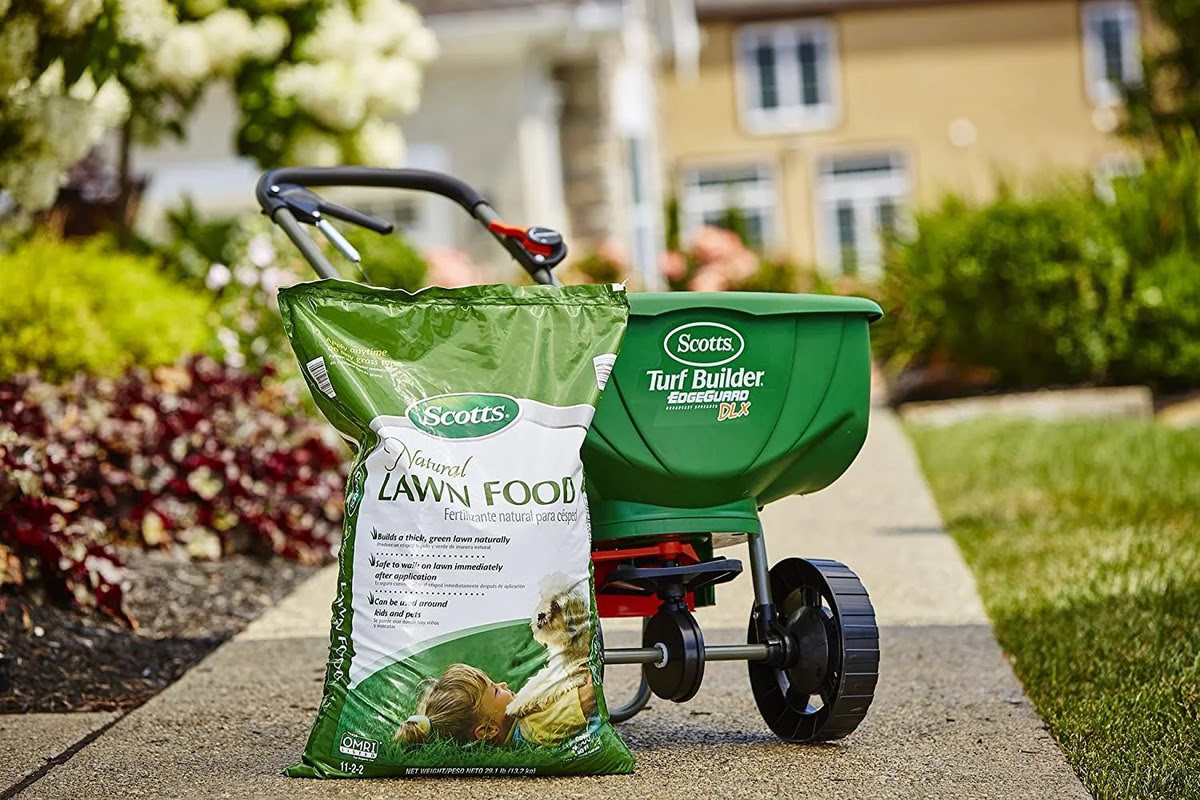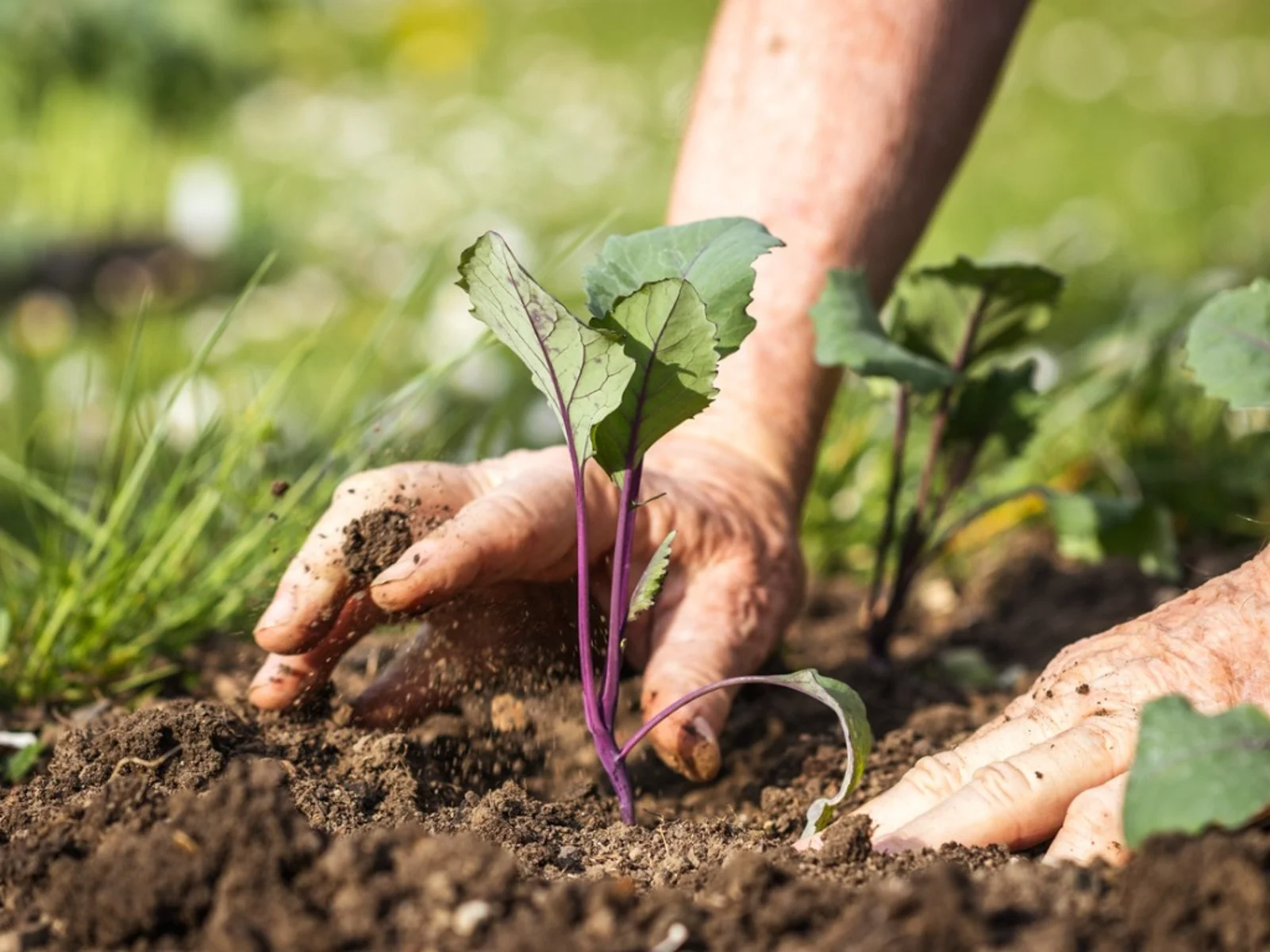Home>Gardening Techniques>When To Apply Scotts Fall Fertilizer
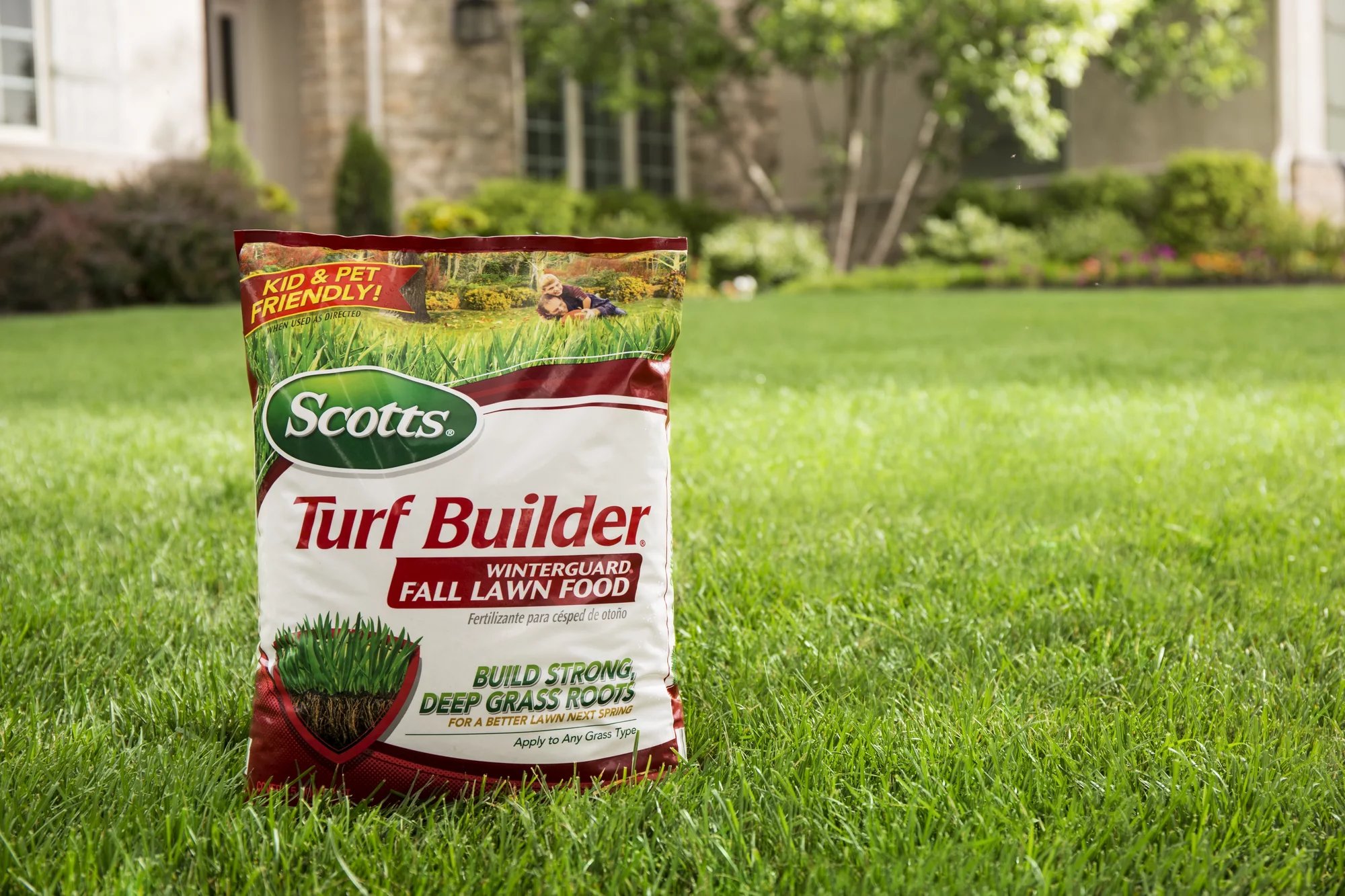

Gardening Techniques
When To Apply Scotts Fall Fertilizer
Modified: January 22, 2024
Discover when the best time is to apply Scotts fall fertilizer for your seasonal gardening needs. Maximize your garden's potential with our expert tips.
(Many of the links in this article redirect to a specific reviewed product. Your purchase of these products through affiliate links helps to generate commission for Chicagolandgardening.com, at no extra cost. Learn more)
Table of Contents
Introduction
Welcome to the world of seasonal gardening! As the seasons change, so do the needs of your garden. One crucial aspect of maintaining a vibrant and healthy garden is understanding when and how to apply fertilizer. In particular, fall is a crucial time for fertilization as it prepares your plants for the harsh winter months and sets the stage for a flourishing spring.
When it comes to fall fertilization, Scotts Fall Fertilizer is a trusted name in the gardening industry. With their range of specialized fall fertilizers, Scotts provides a convenient and effective solution for nourishing your plants during this transitional period. In this article, we will delve into the benefits of fall fertilization, explore the different types of Scotts Fall Fertilizer, discuss factors to consider before application, and provide a comprehensive guide on when and how to apply it.
Whether you’re a seasoned gardener or just starting out, understanding the timing and techniques for applying Scotts Fall Fertilizer will help you achieve vibrant, healthy plants year-round. So let’s dive in and discover the secrets to a thriving fall garden!
Benefits of Fall Fertilization
Fall fertilization plays a vital role in the long-term health and vitality of your garden. Here are some of the key benefits of applying fertilizer during the fall season:
- Promotes Root Development: As the temperatures cool down in the fall, plants focus their energy on root development. By applying fall fertilizer, you provide essential nutrients to support strong root growth. This establishes a strong foundation for your plants, ensuring they can withstand the harsh winter months and thrive in the following seasons.
- Enhances Winter Hardiness: Winter can be tough on plants, especially those in colder climates. Fall fertilization helps enhance the winter hardiness of your plants by increasing their resistance to freezing temperatures and reducing the risk of frost damage. It provides the necessary nutrients that plants need to survive and bounce back in the spring.
- Supports Nutrient Uptake: Applying fertilizer in the fall helps replenish essential nutrients that may have been depleted during the growing season. Nutrient-rich soil ensures that plants have access to the necessary elements for healthy growth. This promotes better nutrient uptake, leading to stronger, more vibrant plants.
- Improves Soil Quality: Fall fertilization not only benefits the plants but also improves the overall health of your soil. Fertilizers help replenish the soil with organic matter, microorganisms, and beneficial nutrients. This leads to improved soil structure, increased water retention, and enhanced microbial activity, creating a fertile environment for plant growth.
- Prevents Weed Growth: Applying fall fertilizer can also help suppress weed growth. By giving your plants a nutrient boost, you encourage robust growth, which in turn creates a dense canopy that shades out weeds. This reduces the need for manual weeding and keeps your garden looking neat and well-maintained.
By understanding and harnessing the benefits of fall fertilization, you can give your garden the extra care and attention it needs to thrive. The next step is to familiarize yourself with Scotts Fall Fertilizer options and determine the best fit for your specific gardening needs.
Understanding Scotts Fall Fertilizers
Scotts offers a range of specialized fall fertilizers designed to meet the specific needs of your garden during this crucial season. Here’s a breakdown of the different types of Scotts Fall Fertilizers:
- Scotts Turf Builder Fall Lawn Food: This fall fertilizer is specially formulated to nourish your lawn and promote strong root growth. It contains slow-release nitrogen, which provides the nutrients your grass needs over an extended period. This helps your lawn recover from summer stress, improves its ability to withstand winter, and sets the stage for lush spring growth.
- Scotts WinterGuard Fall Weed & Feed: If weeds have been a persistent issue in your lawn, this fertilizer is an ideal choice. It not only nourishes your grass but also helps eliminate weeds, such as dandelions and clover. The combination of nutrients and broadleaf weed control ensures your lawn stays healthy and weed-free throughout the fall.
- Scotts Natural Lawn Food: For eco-conscious gardeners, Scotts offers a natural fall fertilizer option. This organic-based lawn food provides the necessary nutrients to support healthy grass growth while being safe for children, pets, and the environment. It improves the soil structure, enhances microbial activity, and delivers long-lasting greenery without the use of synthetic chemicals.
- Scotts Starter Fertilizer: If you’re starting a new lawn or overseeding in the fall, Scotts Starter Fertilizer is an excellent choice. It contains a higher phosphorus content, which stimulates root development and helps establish new grass quickly. This promotes strong and healthy growth, giving your lawn a head start in preparation for the colder months.
Before choosing a Scotts Fall Fertilizer, it’s essential to assess the specific needs of your lawn and plants. Consider factors such as grass type, soil condition, sun exposure, and any existing weed or nutrient deficiencies. Understanding your garden’s requirements will help you select the most suitable Scotts Fall Fertilizer for optimal results.
Factors to Consider Before Applying Scotts Fall Fertilizer
Before applying Scotts Fall Fertilizer, it’s important to take certain factors into consideration to ensure the best results for your garden. Here are some key factors to keep in mind:
- Grass type: Different grass types have different nutrient requirements. Determine the type of grass you have in your lawn, as this will help you choose the appropriate Scotts Fall Fertilizer that provides the necessary nutrients for optimal growth.
- Soil condition: Assess the condition of your soil before applying fertilizer. Conduct a soil test to determine the nutrient levels and pH balance. This will help you understand if any soil amendments are needed before fertilization and ensure that your plants receive the proper nutrients.
- Sun exposure: Consider the amount of sunlight your lawn receives. Some areas may be more shaded than others, which can impact the growth and nutrient requirements of your grass. Choose a fertilizer that addresses the specific needs of your lawn based on sun exposure.
- Existing weed issues: If your lawn has a significant weed problem, you may want to consider a Scotts Fall Fertilizer that includes weed control properties. This will help eliminate existing weeds and prevent their growth during the fall season, giving your grass a chance to flourish.
- Environmental factors: Take into account any environmental factors that may affect the timing of fertilizer application. Consider the climate and weather conditions in your region. Avoid applying fertilizer if heavy rain is expected, as it may wash away the nutrients before they have a chance to penetrate the soil and benefit your plants.
By considering these factors, you can make an informed decision about the type and timing of Scotts Fall Fertilizer application for your garden. Now let’s explore the optimal time to apply Scotts Fall Fertilizer for the best results.
When to Apply Scotts Fall Fertilizer
The timing of applying Scotts Fall Fertilizer is crucial for its effectiveness. It’s recommended to apply fall fertilizer when the grass is actively growing, but before the first frost of the season. Here are some guidelines to help you determine the optimal time for applying Scotts Fall Fertilizer:
- Temperature: The ideal time to apply fall fertilizer is when the soil temperature is between 50°F (10°C) and 80°F (27°C). This temperature range allows for optimal nutrient absorption by the grass roots, ensuring efficient utilization of the fertilizer.
- Growth stage: Apply the Scotts Fall Fertilizer when your grass is still actively growing. This is typically during the late summer or early fall, when the grass is recovering from the stress of summer heat and preparing for winter dormancy.
- Last mowing: Plan to apply the fall fertilizer after your last mowing of the season. This allows the fertilizer to reach the soil surface and have direct contact with the grass roots, maximizing its effectiveness.
- Before the first frost: Avoid applying fall fertilizer too close to the first frost in your region. Ideally, give your grass a few weeks to absorb the nutrients before the onset of freezing temperatures.
It’s important to check the weather forecast before applying Scotts Fall Fertilizer. Avoid applying fertilizer right before heavy rain or during a period of extended drought. Both scenarios can impact the proper absorption and distribution of nutrients.
By following these timing guidelines, you can ensure that your grass receives the maximum benefit from Scotts Fall Fertilizer, setting the stage for a healthy and vibrant lawn come springtime.
Step-by-Step Guide on Applying Scotts Fall Fertilizer
Applying Scotts Fall Fertilizer is a straightforward process, but it’s important to follow the proper steps to ensure even distribution and optimal effectiveness. Here is a step-by-step guide to help you apply Scotts Fall Fertilizer:
- Mow the lawn: Start by mowing your lawn to an appropriate height, ensuring that it’s not too short. This will help the fertilizer reach the soil surface more effectively.
- Remove debris: Clear the lawn of any debris, such as leaves or sticks, before applying the fall fertilizer. This allows for even distribution and prevents any obstacles from blocking the nutrients from reaching the soil.
- Read the instructions: Carefully read and follow the instructions provided on the Scotts Fall Fertilizer packaging. Different products may have specific instructions or recommended application rates based on the size of your lawn.
- Prepare the spreader: Adjust the settings on your spreader according to the instructions. This will ensure that the fertilizer is evenly spread across the lawn. Test the spreading pattern in a small area to confirm the desired coverage and adjust the settings if necessary.
- Apply the fertilizer: Begin spreading the Scotts Fall Fertilizer in a systematic pattern, walking at a steady pace. Start along the edges of your lawn and work your way inward, overlapping each pass slightly to avoid any gaps or missed areas. Maintain a consistent speed and avoid rushing to ensure even coverage.
- Water the lawn: After applying the fertilizer, water your lawn lightly. This helps the nutrients penetrate the soil and reach the grass roots. Avoid overwatering, as it may wash away the fertilizer or cause nutrient runoff.
- Clean up: Once you have finished applying the Scotts Fall Fertilizer, clean your spreader thoroughly to prevent residual fertilizer from corroding the equipment. Store any remaining fertilizer in a cool, dry place for future use.
Following these steps will ensure that the Scotts Fall Fertilizer is applied correctly, promoting healthy growth and nourishment for your lawn during the fall season.
Tips for Successful Application
Applying Scotts Fall Fertilizer requires some attention to detail to ensure a successful outcome. Here are some tips to help you achieve the best results:
- Follow the instructions: Carefully read and follow the instructions provided with the Scotts Fall Fertilizer. This includes application rates, timing, and any additional precautions or recommendations specific to the product.
- Use the right equipment: Invest in a high-quality spreader that suits the size of your lawn. This will help ensure even distribution of the fertilizer and prevent patchy or uneven growth.
- Calibrate your spreader: Before applying the fertilizer, calibrate your spreader according to the instructions provided. This ensures that you are applying the correct amount of fertilizer for your lawn size, preventing over or under-application.
- Avoid overlapping: While it’s important to overlap your spreading pattern slightly to avoid gaps, be mindful not to overlap too much. Overlapping excessively can result in excessive fertilizer application, which can harm your grass and lead to nutrient runoff.
- Consider the weather: Choose a dry day with mild temperatures for applying Scotts Fall Fertilizer. Avoid periods of heavy rain or extreme heat, as both can negatively impact the absorption and effectiveness of the fertilizer.
- Maintain uniform speed: Walk at a consistent speed while spreading the fertilizer to ensure even coverage. Changing your pace can result in uneven distribution and patchy growth.
- Keep children and pets away: To prevent accidental ingestion or contact, keep children and pets away from the lawn until the fertilizer has been watered in or absorbed into the soil.
- Monitor watering: After application, monitor the watering of your lawn to avoid over or under watering. Follow any additional watering recommendations provided with the Scotts Fall Fertilizer for optimal results.
- Store the remaining fertilizer: If you have any leftover Scotts Fall Fertilizer, store it properly in a cool, dry place for future use. Ensure the packaging is tightly sealed to maintain the fertilizer’s integrity.
Following these tips will help you achieve a successful application of Scotts Fall Fertilizer, promoting lush and healthy growth for your lawn throughout the fall season.
Common Mistakes to Avoid
When applying Scotts Fall Fertilizer, it’s important to be aware of common mistakes that can impact the effectiveness of the fertilizer and the health of your lawn. Here are some common mistakes to avoid:
- Overapplication: Applying too much fertilizer can harm your lawn, causing excessive growth, nutrient imbalance, or even “burning” of the grass. Follow the recommended application rates provided on the Scotts Fall Fertilizer packaging.
- Underapplication: On the other hand, underapplying the fertilizer can result in inadequate nutrient supply to your lawn. Make sure to measure and distribute the proper amount of fertilizer for your lawn size.
- Ignoring soil condition: Fertilizer absorption depends on the condition of the soil. Conduct a soil test to identify any deficiencies or imbalances. Address underlying soil issues before applying the fall fertilizer for optimal results.
- Applying at the wrong time: Timing is crucial when it comes to fall fertilization. Make sure to apply Scotts Fall Fertilizer when the grass is actively growing but before the first frost. Applying it too early or too late in the season can negatively impact the effectiveness of the fertilizer.
- Applying during unfavorable weather conditions: Avoid applying the fertilizer during periods of heavy rain or extreme heat. Excessive moisture can wash away the nutrients, while extreme heat can cause stress on the grass and hinder proper absorption.
- Uneven spreading: Inconsistent spreading can result in patchy growth and uneven nutrient distribution. Take your time while spreading the Scotts Fall Fertilizer, ensuring to overlap slightly and maintain a consistent walking speed for even coverage.
- Not watering adequately: After applying the fertilizer, it’s important to water your lawn lightly. This helps the nutrients penetrate the soil and reach the grass roots. Inadequate watering can limit nutrient absorption and hinder the fertilizer’s effectiveness.
- Forgetting about safety precautions: Always follow the safety precautions indicated on the Scotts Fall Fertilizer packaging. Avoid contact with eyes or skin, wear protective clothing, and keep children and pets away from the treated area until the fertilizer has been watered in or absorbed into the soil.
- Storing fertilizer improperly: Improper storage of leftover Scotts Fall Fertilizer can compromise its effectiveness. Ensure that the packaging is tightly sealed and store it in a cool, dry place. This will help maintain the fertilizer’s quality and viability for future use.
By avoiding these common mistakes, you can ensure a successful application of Scotts Fall Fertilizer, leading to healthier and more vibrant growth for your lawn.
Conclusion
Applying Scotts Fall Fertilizer is a crucial step in maintaining a healthy and vibrant garden as the seasons transition. Understanding the benefits of fall fertilization, the different types of Scotts Fall Fertilizers available, and the factors to consider before application is essential for success.
By applying Scotts Fall Fertilizer at the right time and following the proper steps, you can promote root development, enhance winter hardiness, improve soil quality, and suppress weed growth. It’s important to avoid common mistakes such as over or under-application, ignoring soil conditions, applying during unfavorable weather, and uneven spreading.
Remember to read and follow the instructions on the Scotts Fall Fertilizer packaging, choose the right equipment, calibrate your spreader, and consider the specific needs of your lawn. Take into account factors such as grass type, soil condition, sun exposure, existing weed issues, and environmental conditions.
Applying Scotts Fall Fertilizer requires attention to detail, but the benefits to your garden are well worth the effort. By nourishing your plants and laying the groundwork for healthy growth, you’ll enjoy a flourishing garden that blooms with vibrancy in the coming seasons.
So, get ready to make the most of the fall season by applying Scotts Fall Fertilizer and reaping the rewards of a beautifully nurtured garden.
